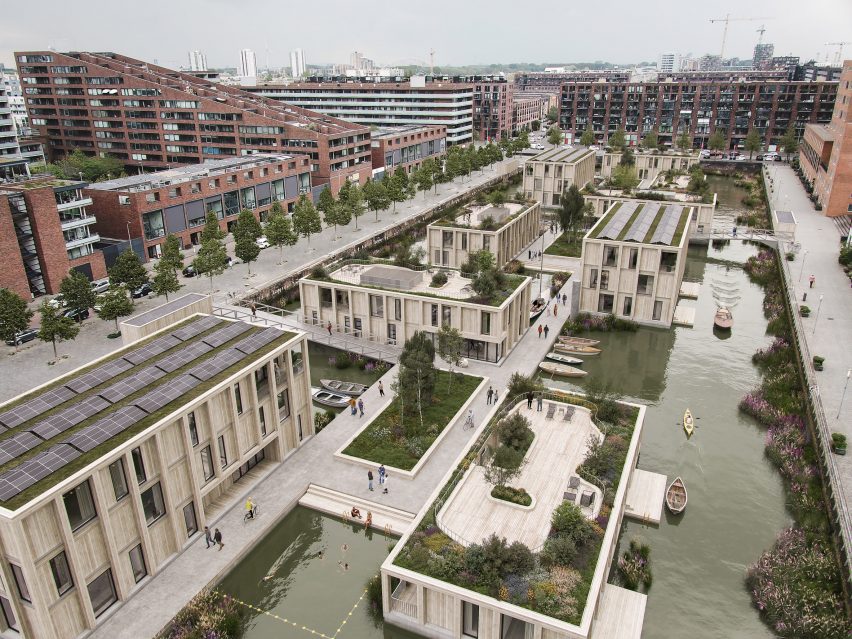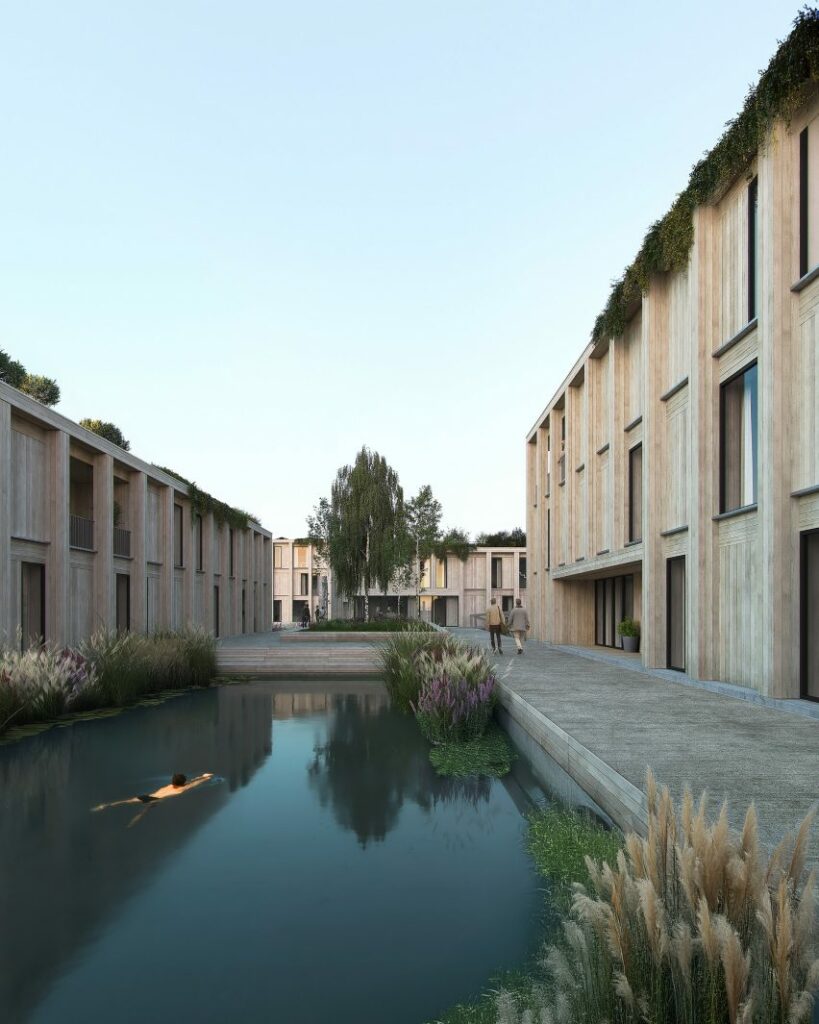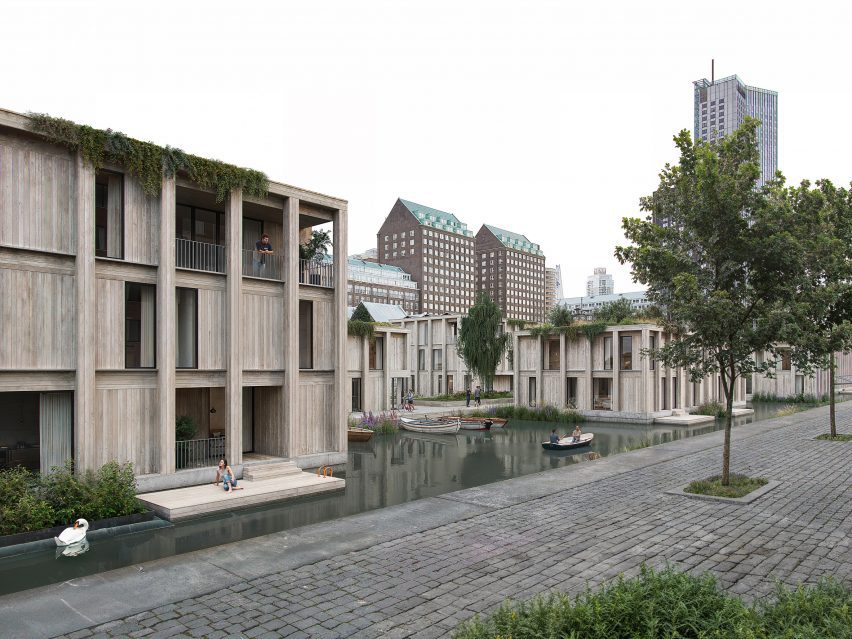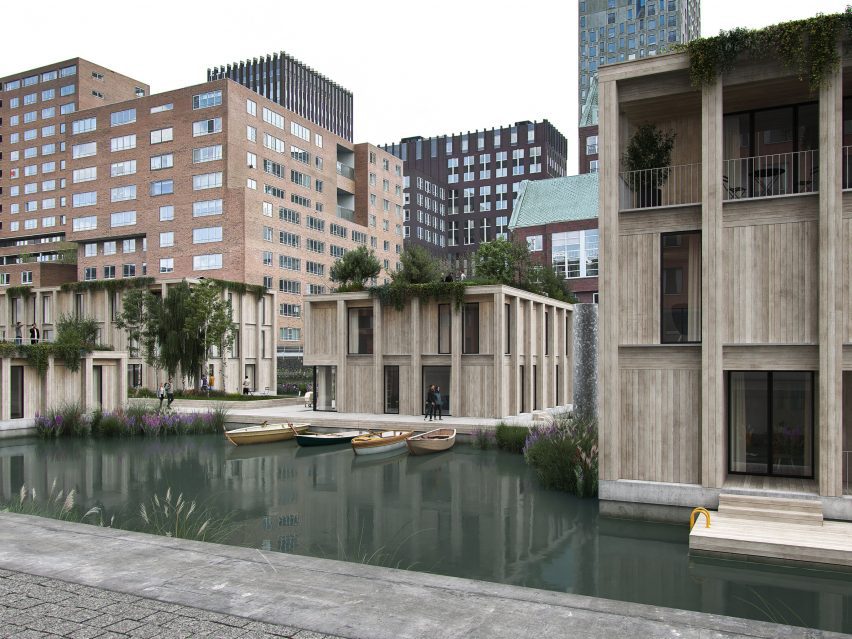Netherlands plans Europe’s largest floating residential complex in Rotterdam
Climate change will alter the shape of Earth’s map, scientists warn, with some areas becoming deserts due to drought while others will be submerged underwater.
The Netherlands falls into the latter category, where Europe’s largest floating residential complex is already being planned.
The prospect of living on water might frighten many, but not the Dutch, whose country has reclaimed nearly 17 percent of its current land mass from the sea through construction works.
The Netherlands is now ready to face this new challenge with the design of a floating residential complex in Rotterdam, accessible only by boat.
The development is being designed by architectural firm MAST, addressing both climate change concerns and aiming to revitalise an abandoned area in Rotterdam’s docks.

“With this project we hope to highlight floating architecture as a sustainable alternative to conventional housing,” said Marshall Blecher, co-founder of MAST.
“The goal is also to show how development doesn’t have to work against the environment but can help by improving water quality, supporting biodiversity and encouraging boat and bicycle transport,” Blecher added.
The Spoorweghaven development will feature 100 affordable homes, commercial units and public spaces, along with floating gardens and rooftop gardens. It will consist of a series of interconnected building blocks linked by paved pathways, scattered greenery and designated swimming areas.
“At a time when many low-lying cities are turning their backs on water trying to protect themselves with tall quays and hard barriers, this project offers another approach – one that restores a direct everyday connection with the harbour,” Blecher said.

Renderings of the proposal reveal a series of modular blocks with straight-line openings and shared rooftops. A network of bridges will connect the dock to the floating complex, which will be fully accessible by bicycle and boat via newly established transportation routes.
To reduce construction waste, the structures will be made from cross-laminated timber and built off-site before being lifted into place.
“They are designed as modular units that can be towed into position and anchored in the water,” Blecher explained. “This approach minimises disruptions during construction and allows for future relocation or reuse of the buildings.”

As part of the sustainability proposal, MAST collaborated with ecological engineering company Biomatrix to install 900 square metres of floating reed beds around the site’s perimeter.
The reed beds will absorb pollutants in the water to make the area safe for swimming while enhancing local biodiversity.
“Salt-resistant grasses and reeds are planted in the substrate, their roots extending into the harbour to function as natural biofilters,” Blecher explained.

“As the roots grow, they absorb pollutants and nutrients, helping reduce algal blooming and increase oxygen levels in the water”.
“Beyond cleaning the water, the reed beds create valuable habitat for marine life and fauna, offering shelter and breeding spaces for birds, fish, invertebrates and water birds,” he added.
The studio’s portfolio already includes the design (in collaboration with another firm) of a floating platform functioning as a marine park in Denmark.









No comments
Thanks for viewing, your comments are appreciated.
Disclaimer: Comments on this blog are NOT posted by Olomo TIMES, Readers are SOLELY responsible for their comments.
Need to contact us for gossips, news reports, adverts or anything?
Email us on; olomoinfo@gmail.com